When asked if he sees the light at the end of the economic tunnel, Donald Bren replied, “No. I don't see the light.”
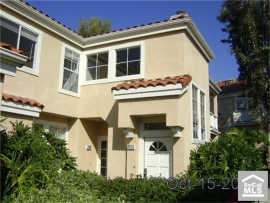
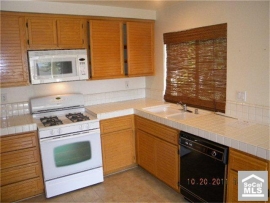
Irvine Home Address … 69 CARTIER AISLE Irvine, CA 92620
Resale Home Price …… $400,000

I never cared much for moonlit skies
I never wink back at fireflies
But now that the stars are in your eyes
I'm beginning to see the light
Ella Fitzgerald
While the Irvine Company touts their bold building plans as a beacon of hope for a recovery in the real estate market, Donald Bren, the chairman of the Irvine Company isn't quite so optimistic.
Irvine Co.'s Bren plans for slow recovery
Published: Oct. 28, 2011 Updated: Oct. 31, 2011 7:20 a.m.
By JONATHAN LANSNER
COLUMNIST
THE ORANGE COUNTY REGISTER
jlansner@ocregister.com
“No. I don't see the light.”
That's how arguably the most successful American real estate developer – Donald Bren of the Irvine Co. – answers the “Do you see the light at the end of the tunnel” question about the overall economic outlook.
Bren, 79, was honored last week by the Urban Land Institute trade group with its new Vanguard Award for a career of cutting-edge real estate planning and development. The billionaire – ranked No. 26 on Forbes' list of America's wealthiest with an estimated $12 billion fortune – sat down with The Orange County Register to discuss his business success and the economic outlook.
He described an overall national economy in deep distress. To Bren, the business climate suffers from both a lack of leadership – a slowly reacting government and skittish business leaders – plus limited financing that only provides fresh funds to the lowest-risk individuals and companies.
“We've all been into it for five, six years,” Bren says in an exasperated tone that symbolizes the frustrations of most Americans – business icons as well as modest individuals – at the slow pace of the rebound from the Great Recession of last decade.
 Bren and the Irvine Company embraced the false rally of 2009. I think they were genuinely surprised when it fizzled out. Their plans were clearly to build on momentum from the false bottom in 2009 with a large production run in 2010 extending into 2011 and beyond. When the props were removed from the market and the underlying problems frequently discussed here surfaced, I don't think they anticipated it. Empty developments like Orchard Hills and half-dead developments like Portola Springs speak to this reality.
Bren and the Irvine Company embraced the false rally of 2009. I think they were genuinely surprised when it fizzled out. Their plans were clearly to build on momentum from the false bottom in 2009 with a large production run in 2010 extending into 2011 and beyond. When the props were removed from the market and the underlying problems frequently discussed here surfaced, I don't think they anticipated it. Empty developments like Orchard Hills and half-dead developments like Portola Springs speak to this reality.
Bren's own businesses are seemingly faring far better than the lethargic regional and national economy. The owner of the large, private development company kept most of his finances out of the discussion at a conference room overlooking the Pacific at his company's Newport Beach headquarters. He did mention that the company has been profitable each year throughout the downturn. Plus, the company's grade A credit rating remains intact – a rarity for real estate enterprises. That financial resolve has allowed the Irvine Co. to finance its recent growth spurt, in part, through business lines of credit.
Bren has been conservative in his use of debt which is part of his success. Most real estate entrepreneurs lever up to the max and roll the dice. If they win, they win big, but if they lose, they completely crap out and lose everything. When I look at the Irvine Company's holdings what impresses me the most is the wide variety of blue-chip cashflow properties they have developed and acquired. Their biggest hurdle is figuring out how to invest all the excess cash they have coming in.
It's no secret that construction is in a horrific slump nationwide. But look around Bren's land holdings and you'll see a rarity: extensive building of new homes, apartments – and even an office tower at Fashion Island.
This activity isn't any wild bet. It's largely the result of Bren's basic business mantra: “We can't predict, but we can plan.”
Based on how heavily they bet on the bear rally, I would agree: they can't predict.
He's leveraged the long-running homebuying appeal of Irvine – plus tax incentives for buyers in 2009 and 2010 – to get an early jump on a new homes rebound, selling 1,722 residences in north Irvine since the start of 2010. That's almost triple the budgeted pace.
That sounds great, but they were touting they sold 1,350 in 2010, so tha puts them on a pace to sell less than 400 in 2011.
His extensive apartment portfolio is nearly full with tenants, so he's aggressively adding new complexes in Irvine – plus in Silicon Valley. And he's constructing a new office tower around the bend from Irvine Co. headquarters only after he signed a world-class tenant to occupy the building: money management giant Pimco.
But Bren admits his overall business hasn't grown this year as fast as hoped. Rentals of his office space, for example, may be on the upswing – but the rents tenants will pay aren't acting in tandem. Then again, shopping increases at his malls are a pleasant surprise.
“What we do is plan, then make adjustments,” Bren says.
SIMPLE PLANS
What you don't get from Bren – in watching him accept the ULI award or in an hour's interview, at least – is as much bravado as you'd expect from a guy who's survived four-plus decades of vicious real estate cycles and emerged with America's largest real estate fortune.
He heaps praise on members of his executive team, as well as William Pereira, who authored the original Irvine master plan. Plus, he cites old-school real estate logic – “Location, location, location” – because he's owned land in a great spot.
Bren's humility is admirable. The man's genius is apparent in how me managed to add 30%-50% to the value of the land he purchased through good planning and a commitment to quality. He could have amassed a fortune building out the Irvine Ranch as a run-of-the-mill subdivision, but he aspired for something greater, and he succeeded in creating it.
Bren notes that geography tells one a lot about economic opportunity these days. Especially, when he speaks of what he calls “two Californias.”
His analysis essentially divides the state, down the middle, west to east. (He mentions this confused East Coast financial types, who tend to think of north-south divides. And it bemuses Bren that major financial players have yet to figure out a state that Bren boasts has the eighth largest economy in the world.)
Bren's “two Californias” comprise a reviving, even “vibrant” collection of coastal metropolitan areas – with 100,000 jobs added in a year, by his math. That's in harsh contrast to California's inland areas that are “devastated, maybe as bad as Nevada.”
I guess he won't be picking up any cashflow properties in Las Vegas….
The state hot spot, in Bren's eyes, is clearly Silicon Valley. There, he says, some of this era's greatest artists – and Bren is a student of art – are creating innovative new products and services. Not to mention creating jobs and a thriving regional economy.
The industrial art discussion leads to brief talk about the late Steve Jobs of Apple fame. Bren says he'll soon be diving into a new biography of the technology visionary, part of what he's said is a lifelong pursuit of understanding other business giants' wisdom.
As for the state as whole, Bren's a touch optimistic, saying the trend line is “positive … barely.” California's economy, “has been jolted,” Bren says, and clearly the recovery is at a pace “not what we're used to.”
Without rising house prices and the associated Ponzi borrowing, the California economy will continue to suffer.
He knows too well that economic challenges abound in the state. Still, there's this coastal rebound and a continued influx of new residents.
“People do leave, to Texas and places,” a tiny dig at critics who use the Lone Star State as an economic example. “But that's just a small part.”
QUIET CRITIC
In part of the ULI award ceremony in Los Angeles on Thursday, Bren expressed his great frustration with land-management bureaucracy.
He bemoaned the fact that it's unlikely that we'll see more major master-planned communities like Mission Viejo and Irvine that he helped create. Current regulations, he fears, would make it too difficult. He noted it took a 28-year battle with California's Coastal Commission to win approval for resorts and homes at Newport Coast.
 He is probably right. The era of the large master-planned community is probably over. For starters it's too difficult to assemble a large enough parcel of land unless you go way out in the hinterlands, and with the perpetual tightening of regulations, it's far too difficult to develop over multi-decade timeframes.
He is probably right. The era of the large master-planned community is probably over. For starters it's too difficult to assemble a large enough parcel of land unless you go way out in the hinterlands, and with the perpetual tightening of regulations, it's far too difficult to develop over multi-decade timeframes.
Yet he's not in the all-regulation-is-bad camp. When he talks about what got the nation into its economic mess – particularly housing – and what might get it out of its funk, Bren bluntly notes government's role. In the middle of last decade, it was obvious to Bren that the mortgage process was being abused by everyone from borrowers to mortgage makers to Wall Street that was reselling the loan to investors. Shoddy loan-making eventually killed real estate.
While it may have been obvious, he didn't mind taking advantage of the morass to sell overpriced homes.
Post collapse, Bren is pained that the government isn't more effective in helping real estate rebound. In housing, for example, a new move by the Obama administration to give refinancing help to troubled homeowners may help, but Bren doesn't think it will be enough. And Bren says calls from some political and economic circles to force more foreclosures and “cleanse” the housing market will only lead to another disaster.
Government help, he says, “has to go further … it has to go beyond normal.“
Bren knows the value of his holdings is quite volatile depending on the resale value of houses he can build on his land. Raw land is a very leveraged asset due to the way residual value winds up in the land. When prices go up, most construction costs are fixed, so the price increase becomes profit. Unfortunately, when prices go down, the reverse is true. (See Valuation of Lots and Raw Land). His comments seem self serving, and they probably are.
Much of Bren's criticisms are subtle, polite – and worth noting.
Yes, a crazed mortgage market – with many to blame – created the real estate debacle. But Bren says homebuilders didn't help their cause by continuing to sell “50-year-old designs.”
The Irvine Co.'s recent house selling success has been tied to novel designs that eliminated lightly used formal dining and living rooms, traded for large great rooms that tied into small-yet-functional patios. As is expected from Bren, these new designs were hatched only after two years of extensive consumer research.
The Irvine Company has really been touting these “innovative floorplans.” I like them, but they only real innovation I see is they managed to create a functional space they could build for $50/SF so they could make greater profits at lower price points.
And Bren is clearly no fan of Wall Street, saying that the Irvine Co.'s private ownership is a tactical advantage. He thinks the fickle, short-term demands of Wall Street investors mess with the long-term nature of solid real estate strategy. And Bren knows: Two decades ago, he briefly ran his apartments business with public ownership.
In discussing the failures of other master-planned communities, he explains that juggling real estate planning plus quarterly profit goals – not to mention bankers' demands on land-purchase mortgages – zaps a key trait required of the successful developer: “Patience.”
You know, having that vision thing.
He is undoubtedly right. Wall Street demands short-term performance at the expense of creating long-term value. Bren is expert at creating long-term value, but his plans may never have come to pass if he had tied in with Wall Street money.
Bren's accountants wince that he chose to give away more than half of his Irvine Ranch to open space – and swatch of raw property five times the size of original plans. Sure, part of that was philanthropy and legacy building. Though, establishing surrounding parkland also creates a tangible asset sold to folks considering Irvine housing vs. some of the wall-to-wall development on hills and valleys seen in other parts of his region.
It was also likely a condition of his approvals that he donate open space. Plus, most of the open space he donated was undevelopable anyway.
“Looking back 100 years, we'll see the open space is the most important feature of Irvine,” Bren says. Then he adds, “And the university” – UC Irvine that sits on land Bren donated to the state.
Donating the university was one his best decisions. Having a university in town brings a more educated and higher paid workforce to pay for his houses. The university added much more value to his land than it ever cost him.
And Bren probably didn't have to heavily design everything from his strip malls to his luxury resort to make a buck. But the art historian in Bren wants a product with a lasting look.
Bren didn't directly answer a question seeking his favorite slice of his development career. Yet he took great pride in discussing the pool at the Pelican Hill Resort. He noted fine details, such as its lining of 1 million tiles. And that the pool is visually framed by a series of columns inspired by the Roman-era architectural writing of Marcus Vitruvius.
“Two thousand years old,” says Bren of Vitruvius' logic, “And still valid today.”
Despite the criticism of Irvine as banal, Bren did create a beautiful community with architecture that will stand the test of time. As with any architecture, it will be dated, but the quality is there, and the dated look will be part of the desired style.

I would also note that not all the looks created have proven timeless and popular. I personally felt the commercial center at Culver and Walnut was ugly, and Bren must have felt the same because it was just redone with a completely different architectural feel.
Ah, longevity. Think what you want about Donald Bren's empire. Nevertheless, remember that not only is he still in business – no small feat, in itself – his company is actively expanding.
He's clearly on the list of business leaders putting big dollars on the line today. And, sadly, that list is a short one.
Contact the writer: jlansner@ocregister.com or 949-777-6727
That was a good report. Kudos to Mr. Lansner.
Larry Roberts is hosting a Las Vegas cashflow properties presentation at the offices of Intercap Lending (9401 Jeronimo, Suite 200, Irvine, CA 92618) on November 9, 2011. Please RSVP at sales@idealhomebrokers.com. Register online here: Las Vegas cashflow property – Intercap Lending
Bought at the peak but still got $100K
The owner of today's featured property bought in mid 2005 with 100% financing, and still managed to extract an additional $100K next year before the market imploded. Not a bad deal. He puts nothing down, gets to live in a property for a year, and the property provides him with $100,000 in spending money. I want one of those too.
——————————————————————————————————————————————-
This property is available for sale via the MLS.
Please contact Shevy Akason, #01836707
949.769.1599
sales@idealhomebrokers.com


Irvine House Address … 69 CARTIER AISLE Irvine, CA 92620
Resale House Price …… $400,000

Beds: 3
Baths: 2
Sq. Ft.: 1593
$251/SF
Property Type: Residential, Condominium
Style: Two Level, Mediterranean
Year Built: 1989
Community: Northwood
County: Orange
MLS#: U11004470
Source: SoCalMLS
Status: Active
On Redfin: 5 days
——————————————————————————
WELCOME HOME TO THE CITY OF IRVINE AND TO ONE OF THE VERY BEST CITIES IN ORANGE COUNTY. THIS IS A CONDOMINIUM THAT LIVES LIKE A SINGLE FAMILY HOME. LOCATED IN THE SOUGHT AFTER AREA OF NORTHWOODS IN THE COMMUNITY OF NORTHWOOD VILLAS. THE PROPERTY FEATURES THREE BEDROOMS, AND TWO BATHROOMS, WITH CLOSE TO 1,593 SQUARE FEET OF INTERIOR LIVING SPACE THAT MAY BE JUST THE RIGHT SIZE FOR YOUR ACTIVE LIFESTYLE. YOU ARE PART OF AN ASSOCIATION THAT CREATES THE FEELING OF BEING ON VACATION IN AN EXCLUSIVE RESORT. YOU WILL ENJOY THE ASSOCIATION POOL, SPA, AND COMMON AREAS. THE LOCATION IS FANTASTIC YOU ARE CLOSE TO ALL THE GREAT THINGS IN IRVINE; PARKS, SCHOOLS, RECREATION, TRANSPORTATION AND SO MUCH MORE. SO COME HOME TO IRVINE, AND START TO LIVE THE ORANGE COUNTY LIFESTYLE TODAY.
——————————————————————————————————————————————-
Proprietary IHB commentary and analysis ![]()
Resale Home Price …… $400,000
House Purchase Price … $549,000
House Purchase Date …. 5/23/2005
Net Gain (Loss) ………. ($173,000)
Percent Change ………. -31.5%
Annual Appreciation … -4.8%
Cost of Home Ownership
————————————————-
$400,000 ………. Asking Price
$14,000 ………. 3.5% Down FHA Financing
4.18% …………… Mortgage Interest Rate
$386,000 ………. 30-Year Mortgage
$112,142 ………. Income Requirement
$1,883 ………. Monthly Mortgage Payment
$347 ………. Property Tax (@1.04%)
$0 ………. Special Taxes and Levies (Mello Roos)
$83 ………. Homeowners Insurance (@ 0.25%)
$444 ………. Private Mortgage Insurance
$140 ………. Homeowners Association Fees
============================================
$2,897 ………. Monthly Cash Outlays
-$296 ………. Tax Savings (% of Interest and Property Tax)
-$539 ………. Equity Hidden in Payment (Amortization)
$21 ………. Lost Income to Down Payment (net of taxes)
$70 ………. Maintenance and Replacement Reserves
============================================
$2,153 ………. Monthly Cost of Ownership
Cash Acquisition Demands
——————————————————————————
$4,000 ………. Furnishing and Move In @1%
$4,000 ………. Closing Costs @1%
$3,860 ………… Interest Points @1% of Loan
$14,000 ………. Down Payment
============================================
$25,860 ………. Total Cash Costs
$33,000 ………… Emergency Cash Reserves
============================================
$58,860 ………. Total Savings Needed
——————————————————————————————————————————————————-
Larry Roberts and Shevy Akason are hosting an OC housing market presentation at the offices of Intercap Lending (9401 Jeronimo, Suite 200, Irvine, CA 92618) on November 9, 2011. Please RSVP at sales@idealhomebrokers.com. Register online here: OC Housing Market – Intercap Lending.
.png)
.png)
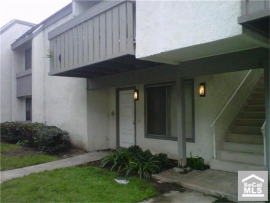



 Obama showed the courage to do the right thing despite pressures from the extreme left. He lacks the courage to say no to this bill, and he is hoping the Republicans in the House will kill it and take the heat for him.
Obama showed the courage to do the right thing despite pressures from the extreme left. He lacks the courage to say no to this bill, and he is hoping the Republicans in the House will kill it and take the heat for him. .
. Any increase in the conforming limit will increase the losses at the GSEs and will serve as a bailout to the banks. When the conforming limit was high, banks could offload their toxic crap through purchase or refinance to the GSEs. Once the conforming limit dropped, banks were stuck with their remaining bad loans.
Any increase in the conforming limit will increase the losses at the GSEs and will serve as a bailout to the banks. When the conforming limit was high, banks could offload their toxic crap through purchase or refinance to the GSEs. Once the conforming limit dropped, banks were stuck with their remaining bad loans..png)
 proeprty is just above its 2002 purchase price. When commissions and negotiating room is factored in, this will be a 2002 rollback.
proeprty is just above its 2002 purchase price. When commissions and negotiating room is factored in, this will be a 2002 rollback.
.png)
.png)
.png)
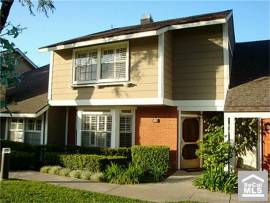









 Besides not losing hundreds of thousands of dollars, being a renter for the last ten years has given me the freedom to move wherever and whenever I wished.
Besides not losing hundreds of thousands of dollars, being a renter for the last ten years has given me the freedom to move wherever and whenever I wished.


 Charming 3 Bedroom Townhome Located In The Desirable Sheffield Manor Community. Light & Bright Floor Plan Features Laminate Wood Flooring, Vinyl Slider, Custom Baseboards, 6 Panel Doors, Plantation Shutters, Ceiling Fans & Mirrored Wardrobes. Upgraded Kitchen Includes Granite Enhanced Counters, Stainless Steel Appliances, Breakfast Counter Bar & Garden Window Overlooking The Private Patio Area. Large Master Bedroom Suite With Raised Ceiling, Greenbelt Views & An Upgraded Bath With Granite, Travertine Tile & Shower. Wonderful Association Amenities & Steps To Award Winning Elementary & Middle Schools. Centrally Located Near Walking Trails, Restaurants & Shopping. Low HOA Dues & No Mello Roos
Charming 3 Bedroom Townhome Located In The Desirable Sheffield Manor Community. Light & Bright Floor Plan Features Laminate Wood Flooring, Vinyl Slider, Custom Baseboards, 6 Panel Doors, Plantation Shutters, Ceiling Fans & Mirrored Wardrobes. Upgraded Kitchen Includes Granite Enhanced Counters, Stainless Steel Appliances, Breakfast Counter Bar & Garden Window Overlooking The Private Patio Area. Large Master Bedroom Suite With Raised Ceiling, Greenbelt Views & An Upgraded Bath With Granite, Travertine Tile & Shower. Wonderful Association Amenities & Steps To Award Winning Elementary & Middle Schools. Centrally Located Near Walking Trails, Restaurants & Shopping. Low HOA Dues & No Mello Roos 
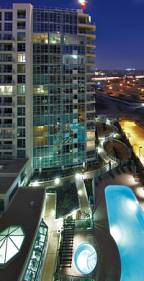

 The Chinese have long known they have a problem with real estate values. Over the last several years, the Chinese government has enacted a series of half-hearted policies aimed to slow the increase in real estate prices. Unfortunately, the Chinese housing bubble is a runaway freight train heading for an awful crash.
The Chinese have long known they have a problem with real estate values. Over the last several years, the Chinese government has enacted a series of half-hearted policies aimed to slow the increase in real estate prices. Unfortunately, the Chinese housing bubble is a runaway freight train heading for an awful crash.
 It will be interesting to see how the Chinese react to this problem. They surrendered central control of all pricing and embraced a modified form of capitalism. With capitalism comes its associated ills, one of which is Ponzi viruses. Once a Ponzi virus in unleashed on the financial system it reproduces like a cancer cell until it grows so large it imperils the economy. China should have stamped out this virus years ago, but the ensuing development it created was highly sought after by the government, so they didn't recognize the danger in what they were doing.
It will be interesting to see how the Chinese react to this problem. They surrendered central control of all pricing and embraced a modified form of capitalism. With capitalism comes its associated ills, one of which is Ponzi viruses. Once a Ponzi virus in unleashed on the financial system it reproduces like a cancer cell until it grows so large it imperils the economy. China should have stamped out this virus years ago, but the ensuing development it created was highly sought after by the government, so they didn't recognize the danger in what they were doing.




.png)